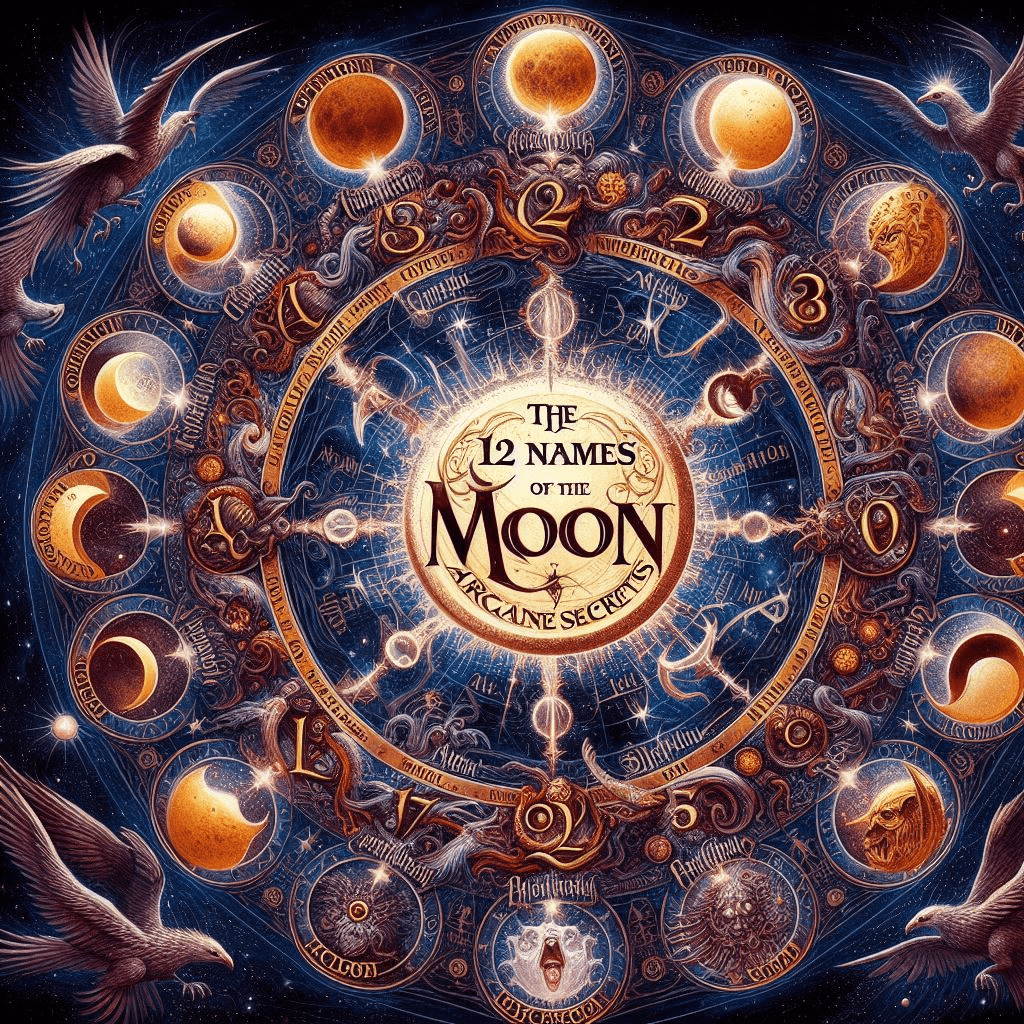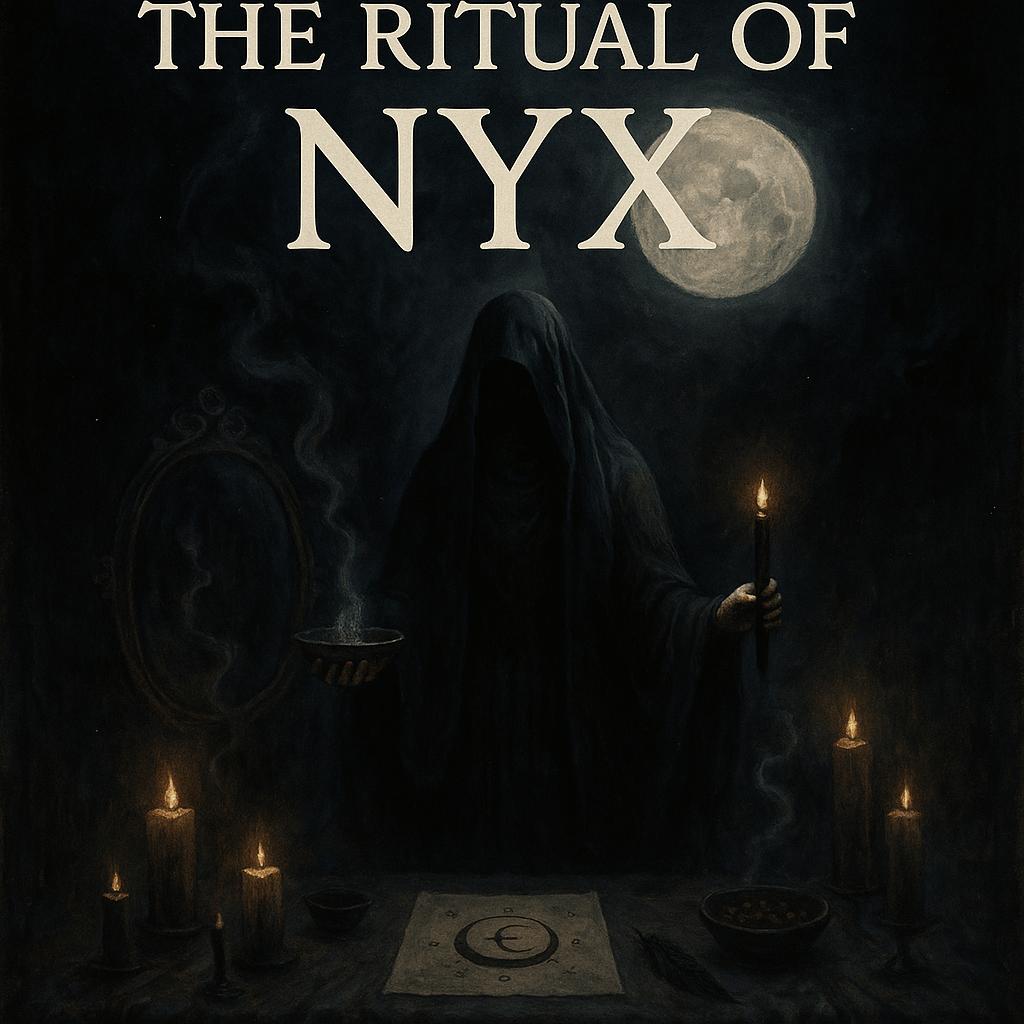Your cart is currently empty!

Unveiling Arcane Secrets and Their Origins: The 12 Names of the Moon
In the shadowy realms of ancient lore and mystical traditions, the moon has always held a place of profound significance. Each full moon of the year is not merely a celestial event but a portal to hidden knowledge and arcane wisdom. Join us as we delve into the enigmatic names of the moon, uncovering the secrets whispered through the ages and the origins of these mystical names.
1. Wolf Moon (January)
History and Origins: The Wolf Moon is named after the howling of wolves during the cold January nights. This name originates from Native American and early Colonial American traditions, where wolves were often heard howling in hunger during this time of year. The howls were believed to be a call to the spirits, invoking strength and resilience. In some cultures, the Wolf Moon was also seen as a time to honor the wolf as a symbol of loyalty, family, and protection. The wolf, a creature of the night, was revered for its keen instincts and survival skills, making the Wolf Moon a powerful symbol of endurance and community.
2. Snow Moon (February)
History and Origins: February’s Snow Moon is named for the heavy snowfall that typically occurs during this month. It is also known as the Hunger Moon, as harsh weather conditions made hunting difficult. This name comes from Native American tribes who relied on the lunar calendar to track the seasons and prepare for the scarcity of resources. The Snow Moon was a time for communities to come together, share resources, and support each other through the harsh winter. The deep snows of February were seen as both a challenge and a blanket of purity, covering the earth in a serene, white silence.
3. Worm Moon (March)
History and Origins: As the ground begins to thaw in March, earthworms reappear, signaling the return of spring. This moon is also called the Sap Moon, marking the time when maple sap begins to flow. The name “Worm Moon” comes from the Algonquin tribes, who observed the earthworms’ emergence as a sign of the earth’s renewal. In Celtic traditions, this moon was associated with the goddess Ostara, symbolizing fertility and rebirth. The Worm Moon heralds the awakening of the earth, as life begins to stir beneath the soil, promising new growth and the return of warmth.
4. Pink Moon (April)
History and Origins: The Pink Moon is named after the pink phlox flowers that bloom in early spring. It is also known as the Sprouting Grass Moon or the Fish Moon, as it coincides with the sprouting of grass and the spawning of fish. This name has its roots in Native American traditions, celebrating the vibrant renewal of life. In European folklore, the Pink Moon was linked to the celebration of Beltane, a festival of fire and fertility. The Pink Moon’s gentle hue reflects the soft pastels of spring blossoms, a time of beauty and transformation as the world awakens from its winter slumber.
5. Flower Moon (May)
History and Origins: May’s Flower Moon celebrates the abundance of blooming flowers. It is also referred to as the Corn Planting Moon, as it marks the time for planting crops. This name originates from various Native American tribes who used the lunar cycle to guide their agricultural practices. The Flower Moon was a time to honor the earth’s fertility and the interconnectedness of all living things. In Roman mythology, this moon was associated with Flora, the goddess of flowers and spring. The Flower Moon’s vibrant display of blossoms symbolizes the peak of spring’s fertility, a time of growth and renewal.
6. Strawberry Moon (June)
History and Origins: The Strawberry Moon signifies the ripening of strawberries in June. In Europe, it is also known as the Rose Moon, celebrating the blooming of roses. The name “Strawberry Moon” comes from the Algonquin tribes, who saw this time as the peak of the strawberry harvest. In ancient European traditions, this moon was linked to the summer solstice and the celebration of Midsummer, a time of magic and enchantment. The Strawberry Moon’s warm, golden glow heralds the sweetness of summer, a time of abundance and the fruition of early crops.
7. Buck Moon (July)
History and Origins: July’s Buck Moon is named for the time when male deer, or bucks, begin to grow their new antlers. It is also called the Thunder Moon, due to frequent thunderstorms during this month. This name comes from Native American traditions, observing the natural cycles of wildlife. The Buck Moon was a time to honor the strength and vitality of the deer, a symbol of regeneration and growth. In Norse mythology, this moon was associated with Thor, the god of thunder. The Buck Moon’s powerful energy reflects the dynamic forces of nature, a time of growth and renewal.
8. Sturgeon Moon (August)
History and Origins: The Sturgeon Moon is named after the large fish that were abundant in North America’s Great Lakes during August. It is also known as the Green Corn Moon or the Grain Moon, marking the time of harvest. This name originates from the fishing practices of Native American tribes, who relied on the sturgeon for sustenance. The Sturgeon Moon was a time to celebrate the bounty of the waters and the earth. In ancient Greek mythology, this moon was linked to Demeter, the goddess of the harvest. The Sturgeon Moon’s rich, golden light signifies the abundance of the late summer harvest.
9. Harvest Moon (September)
History and Origins: The Harvest Moon is the full moon closest to the autumn equinox. It provided extra light for farmers to harvest their crops late into the night. It is also called the Corn Moon. This name has its roots in European agricultural traditions, where the moonlight was crucial for the harvest season. The Harvest Moon was a time of abundance and gratitude, a celebration of the earth’s generosity. In Chinese culture, this moon is celebrated during the Mid-Autumn Festival, a time of family reunions and mooncakes. The Harvest Moon’s bright, golden glow symbolizes the culmination of the year’s hard work and the gathering of the harvest.
10. Hunter’s Moon (October)
History and Origins: October’s Hunter’s Moon signaled the time to hunt and prepare for winter. The bright moonlight made it easier to spot game animals. This name comes from various cultures, including Native American and European traditions, where hunting was essential for survival during the colder months. The Hunter’s Moon was a time of strategy and foresight, a preparation for the long winter ahead. In Celtic mythology, this moon was associated with Samhain, a festival marking the end of the harvest season and the beginning of winter. The Hunter’s Moon’s eerie light casts long shadows, a reminder of the cycle of life and death.
11. Beaver Moon (November)
History and Origins: The Beaver Moon is named for the time when beavers build their winter dams. It is also known as the Frost Moon, as it marks the onset of frost. This name originates from the practices of Native American tribes and early settlers, who observed the beavers’ preparations for winter. The Beaver Moon was a time to honor the industriousness and resourcefulness of the beaver, a symbol of hard work and preparation. In some European traditions, this moon was linked to the celebration of All Saints’ Day and All Souls’ Day, a time to remember the dead. The Beaver Moon’s cold, clear light heralds the coming of winter and the need for preparation and foresight.
12. Cold Moon (December)
History and Origins: December’s Cold Moon reflects the long, cold nights of winter. It is also called the Long Night Moon, as it occurs near the winter solstice when nights are the longest. This name comes from various cultures, recognizing the deep chill and extended darkness of the winter season. The Cold Moon was a time of reflection and rest, a period to embrace the stillness and find wisdom in the darkness. In ancient Roman traditions, this moon was associated with Saturnalia, a festival of light and renewal. The Cold Moon’s icy glow illuminates the longest nights, a time for introspection and the celebration of light in the darkness.






